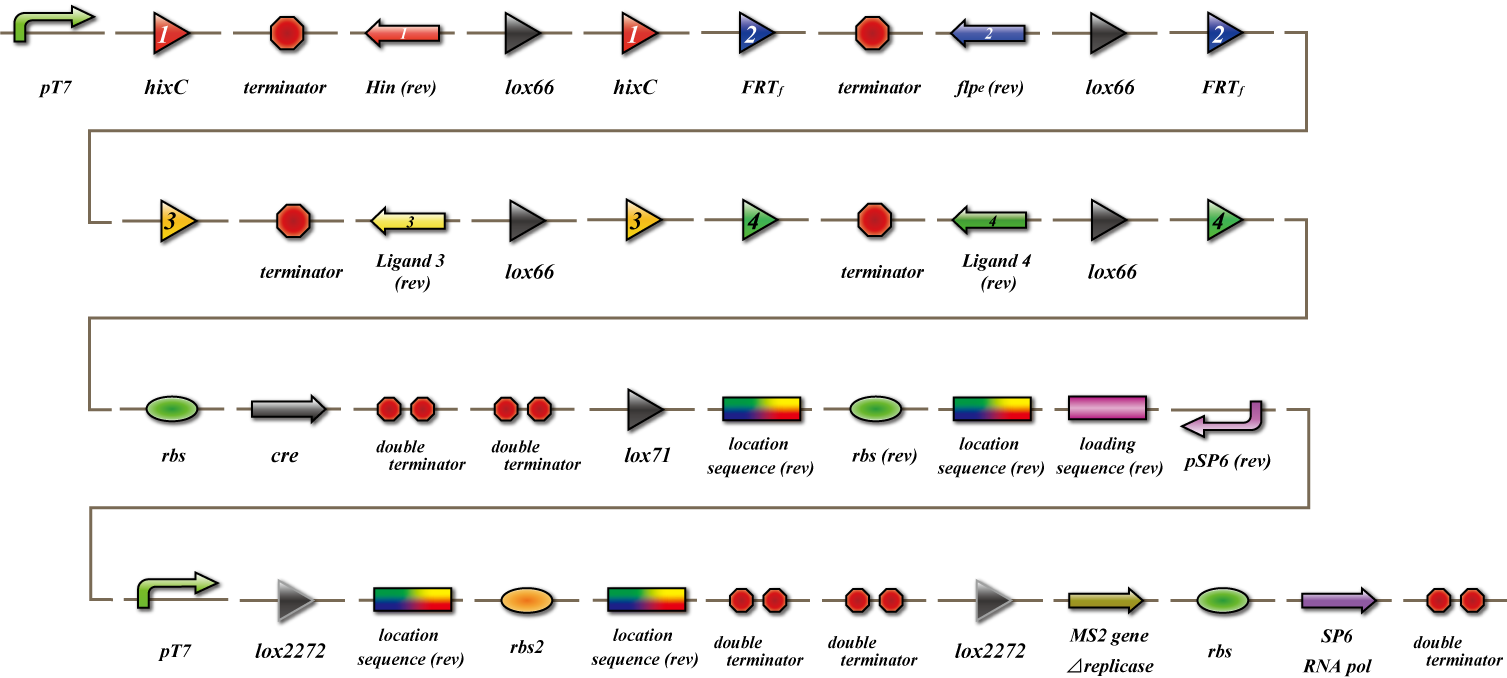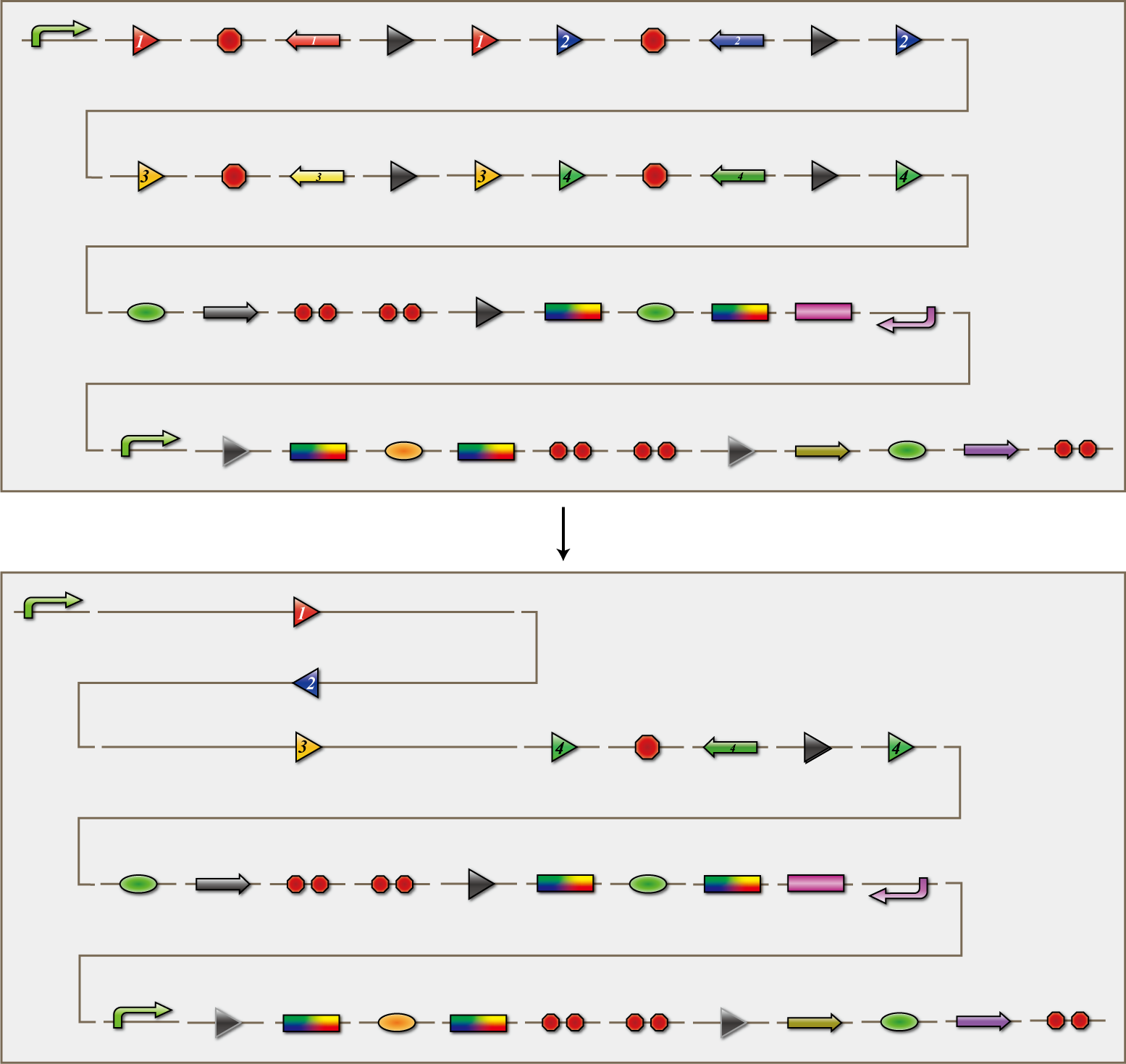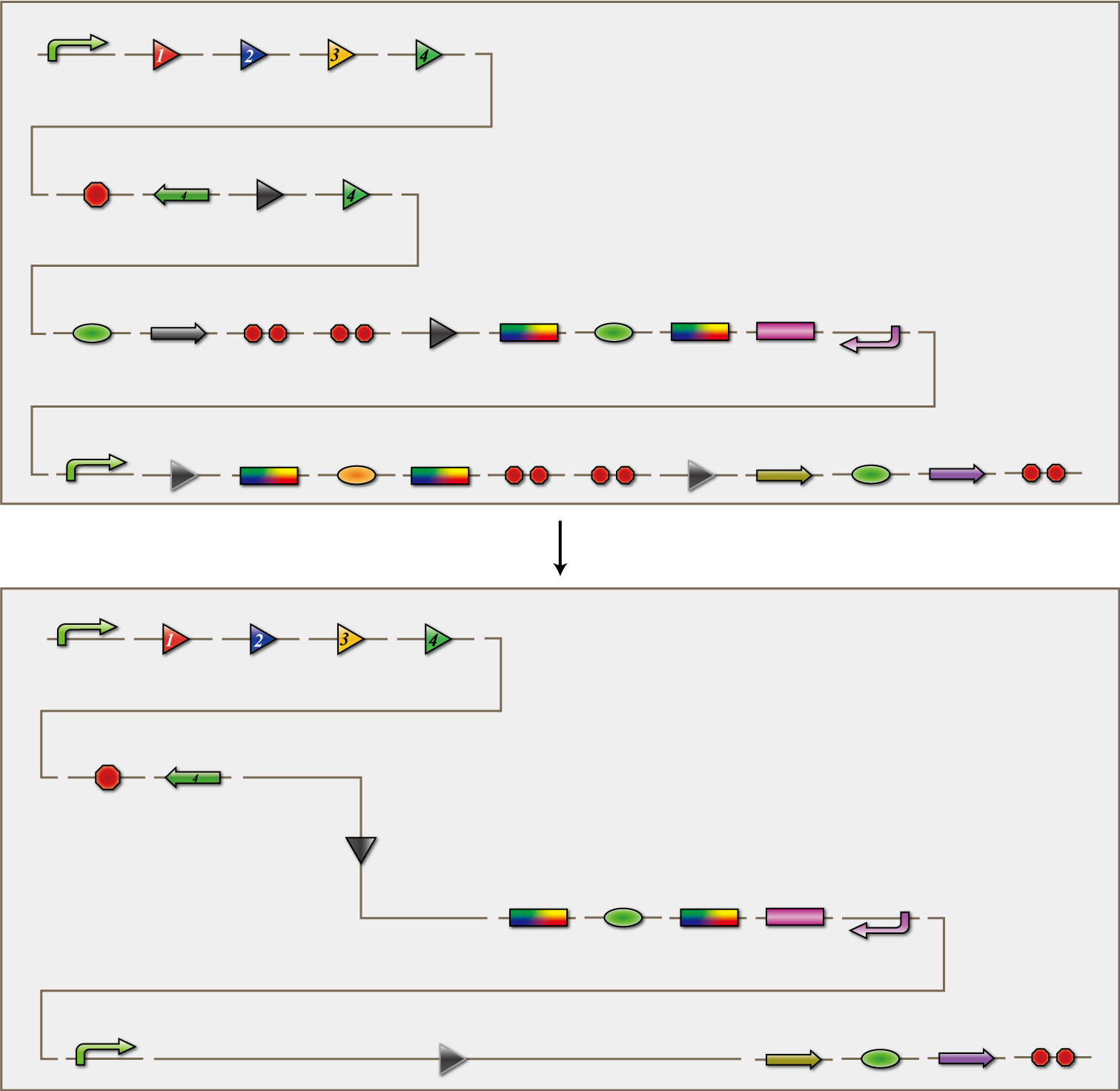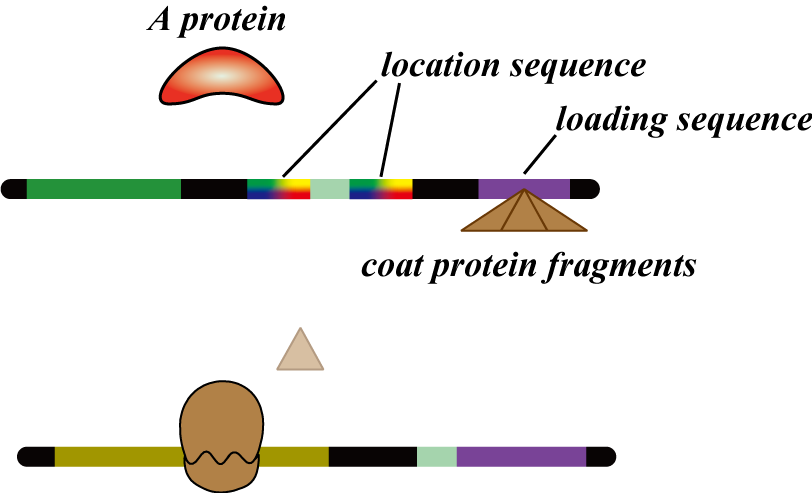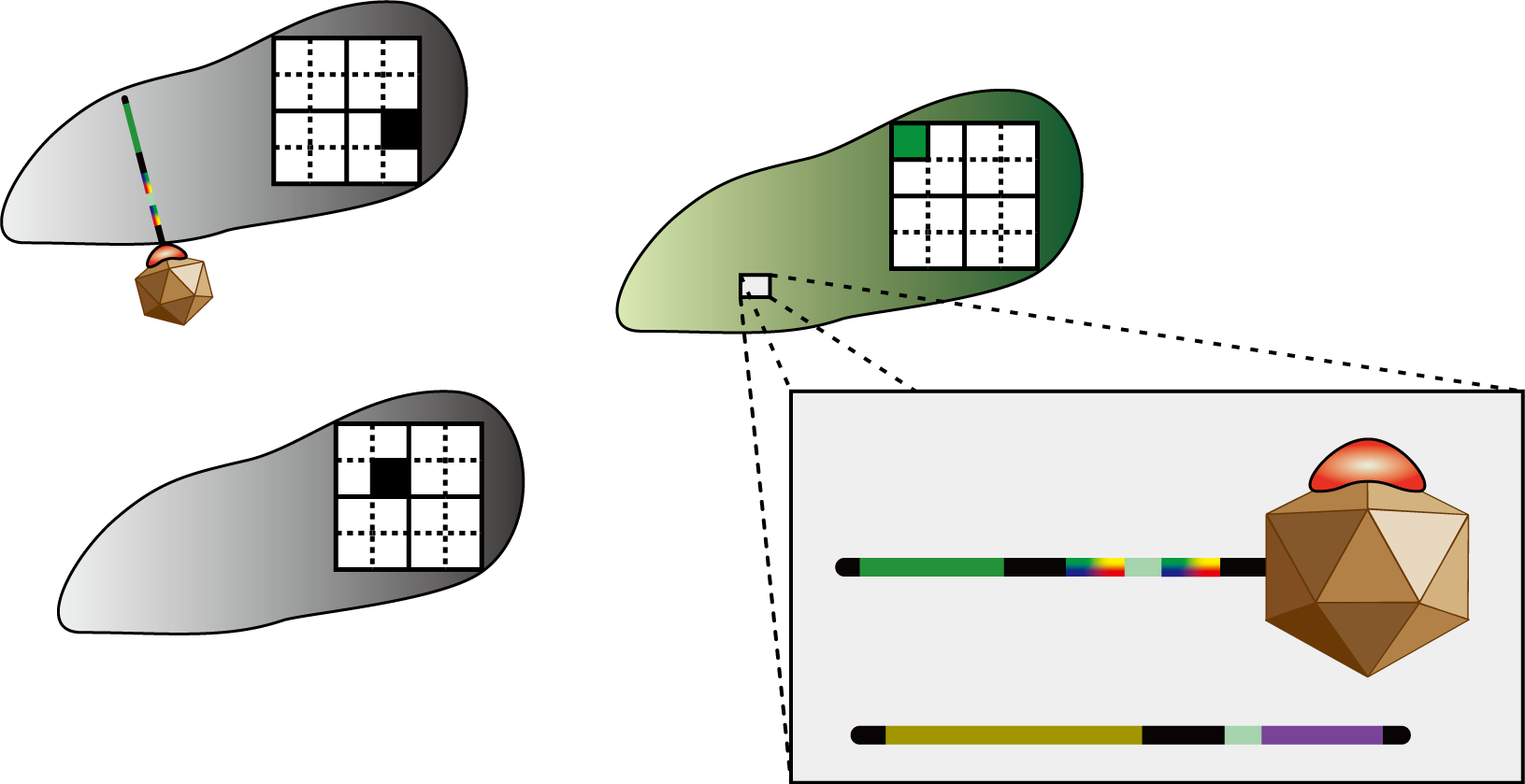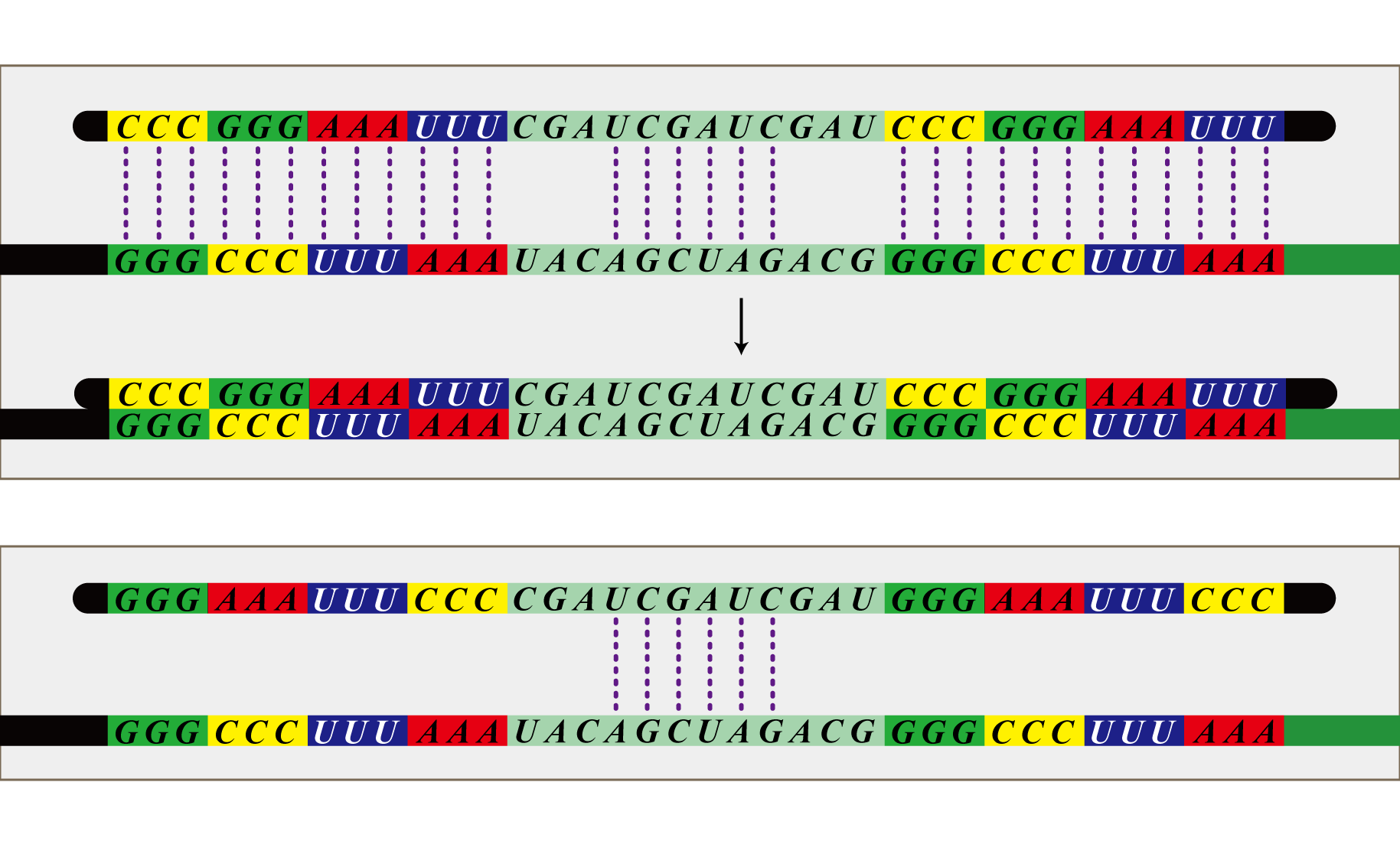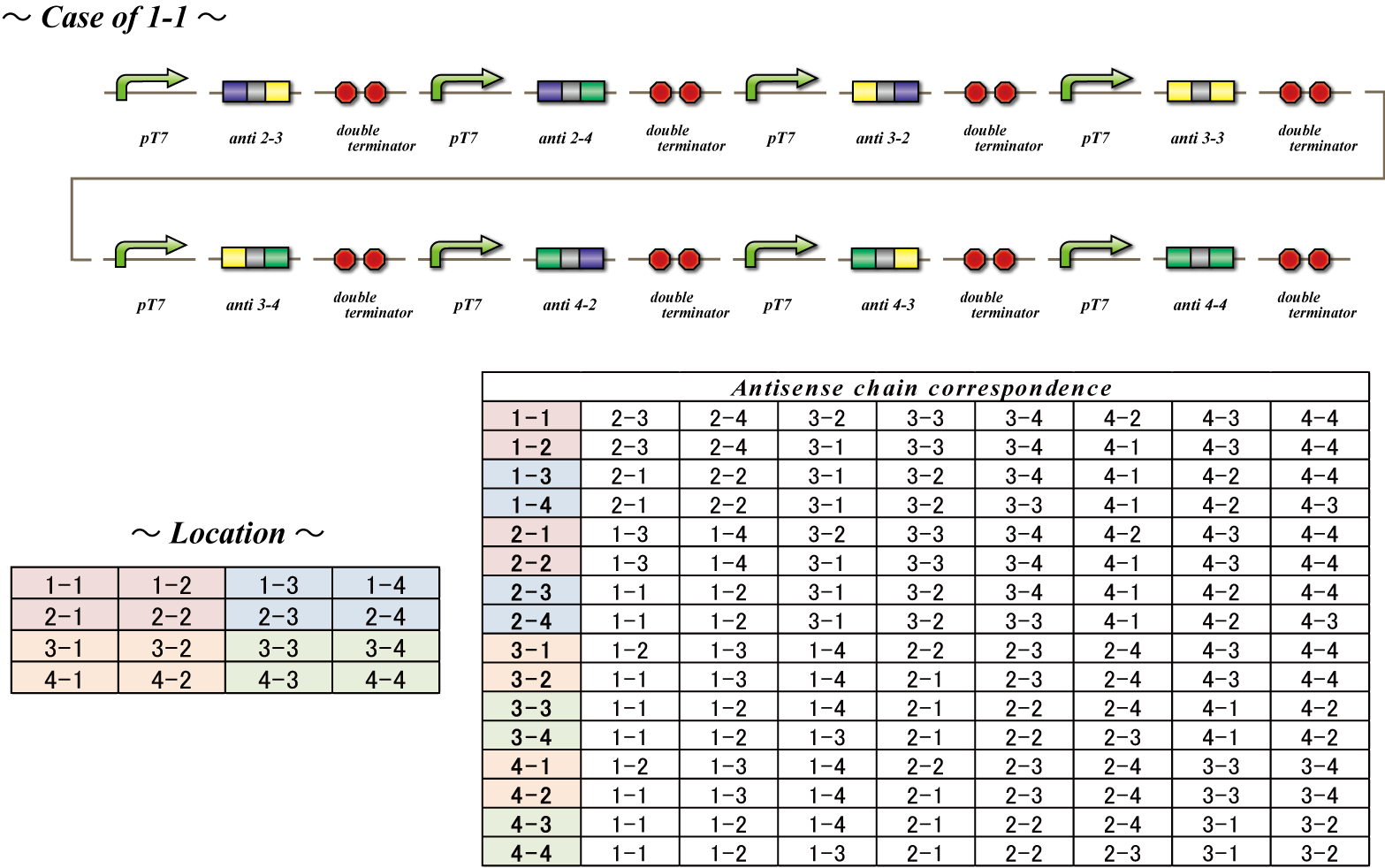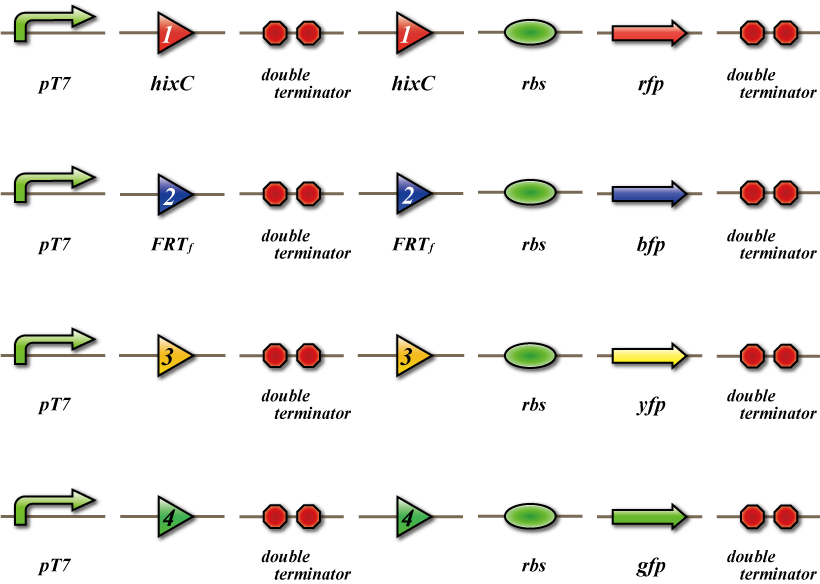Team:UT-Tokyo/Sudoku construct
From 2010.igem.org


Sudoku
Introduction System Lab note Result Reference
Construct
Now we'll explain how to solve Sudoku with E.coli.
To explain this, we divide several steps:
- 1. #4C3 leak switch
- 2. #Signal virus
- * transcription of MS2 phage & location sequence
- * infection of signal virus
- * selective translational suppression
- 3. #Visualization of results
In order to solve Sudoku by E. coli, each microbe should possess grid and number information, with the ability to transmit the information mutually. At the same time, it is also necessary to control which E. coli to receive the information, according to the grid information (e.g. the information of grid 1-1 can be received by E. coli in grid 1-2, but cannot be received by E. coli in 4-4 grid). We propose a new system for the information transformation by RNA virus; “signal virus”. In this system, we propose using four types of RNA phage each with number information from 1 to 4(namely, four types of messenger RNA of site-specific recombination enzyme (SSRE)).
The point is that the grid information is not spatial one. Instead, information transmission is replaced by mutual interaction between genomes. The practical solvation is not done in the plate with 4x4 cells. It is actually solved by E. coli in each tube correspond to each grid, and the answer is induced by genome interactions in the tube.
E. coli whose number is already determined (let's call them "uni-output state") transmit their number information using "signal virus" to those whose number is still not determined ("multi-output state"). Once those E. coli in “multi-output state” received number information from appropriate grids, they have to recognize and manage the information, and finally, output their apt number. For example, if E. coli in "multi-output state" received number information in the order like 1->2->3, then, it'll become "uni-output state" and output 4. If E. coli in "multi-output state" received number information in the order like 3->2->4, then, it'll output 1 and transmit the information to grids around it. Here, you have to be aware that in this system, we need to admit randomness in the order of number information E. coli receive, and detect the variation, not the frequency of the number information. Which means that, E. coli in "multi-output state" have to output 4 whether it received number information in the order 1->2->3 or 3->1->2, and have to remain in "multi-output state" whether it recieved information 2, or 1->2, or 1->2->2->2->1 in series. That is to say, E. coli should turn into "uni-output state" only when it recieved 3 different types of the number in any order, and output the left number information. This is what our "4C3 leak switch" realizes.
4C3 leak switch
4Number information from appropriate grids is transmitted to E. coli by signal virus, which will be described later. 4 types of the number information (namely 1, 2, 3, 4) correspond to 4 types of messenger RNA which code different SSRE. Those messenger RNA will be carried by RNA phage to the inside of E. coli and being translated, and expressed as SSRE which corresponds to each number.
The structure of the 4C3 leak switch will be shown in the figure-. There are 4 terminators between promoter and coding regions which express proteins work as switch.
Each of four terminators is inserted into a different kind of site-specific recombination array. When SSRE is expressed, it will bind on the specific array and cut the site. In this way, terminators are being cut off.
The point is that each type of SSRE corresponds to each terminator. Thus, if there is no number information transmitted, there are still four terminators left before the protein cording region. If only one type of number information transmitted, which means that one type of SSRE came into the cell, the terminator correspond to the enzyme is cut off and there are still three of them left. In this way, if there are two types of number information being transmitted, tow terminators left, and if three types of number information being transmitted, only one terminators left. The maximum types of information E. coli in "multi-output state" can receive is three.
When 3 types of information are being transmitted, there are only one terminator left, which is not strong enough to stop all translations by RNA polymerase. Some RNA polymerases can "leak" through terminator, and this is why our switch is called "4C3 leak switch".
Our terminator is designed as a very sensitive one. When there are more than two terminators, only few proteins coded ahead the terminator can be expressed, which is so few that it can't function well. Though, when there is only one terminator, RNA polymerase can leak on certain extent, which is enough for expressed proteins to work. By using this terminator, we can realize a switch which turns on when any three types of number information being transmitted.
As you can see from the figure, actually, each corresponding SSRE coding region is near terminator, so it will be cut off together. If SSRE1 came into the cell, it will cut off SSRE1 coding region with terminator. Overall, when number information was transmitted in order like 1->2->3, and the switch turned on, there are only SSRE4 coding region left.
When signal switch turns on, the left SSRE coding region (which is SSRE4 in the late example, and this will be the answer of SUDOKU), grid location coding region (location sequence), and phage protein coding region (MS2 gene cluster) will be translated. These proteins will be assembled and become RNA phage which transmits number information to other E. coli.
Signal virus
When 4C3 leak switch got three types of number information and turns on, RNA phage with the left number information will be produced from the E. coli. This is the signal virus which transmits the number information to appropriate grids.
Transcription of MS2 phage & location sequence
Every E. coli have a plasmid with a set of gene which codes information of grid which is not in the same law, column, and subgrid. Messenger RNA translated from this gene will be an antisense RNA of messenger RNA transmitted by RNA virus, and it is able to interrupt gene expression by making the double helix of messenger RNA and prevent ribosome to carry on protein expression. Using this system, no matter in case that E. coli is infected by RNA viruses of all grids, it can choose which information to receive. That's because if E. coli don't want to receive information from certain grid, it can make antisense RNA and stop the expression of the enzyme in RNA phage. For example, E. coli in grid 1-1 will have antisense RNA correspond to messenger RNA from grid 2-3, 2-4, 3-2, 3-3, 3-4, 4-2, 4-3, 4-4, and shut out number information from those girds. Thus, enzymes correspond to number information of appropriate grids are expressed in E. coli and launch the 4C3 leak switch.
Infection of signal virus
Infection of signal virus.
Infection of signal virus.
Infection of signal virus.
Infection of signal virus.
Infection of signal virus.
Infection of signal virus.
Infection of signal virus.
Infection of signal virus.
Infection of signal virus.
Infection of signal virus.
Selective translational suppression
Selective translational suppression.
Selective translational suppression.
Selective translational suppression.
Selective translational suppression.
Selective translational suppression.
Selective translational suppression.
Selective translational suppression.
Selective translational suppression.
Selective translational suppression.
Selective translational suppression.
Visualization of results
In order to be able to "see" that SUDOKU has been solved, we will prepare cluster of E. coli for detection. This detection E. coli will shut out all information from RNA virus except the virus produced by itself. By using antisense RNA, they will express SSRE which corresponds to the answer E. coli introduced.
In this detection E. coli, SSRE will cut off double terminator introduced ahead of fluorescent protein coding region. Thus, parallel fluorescent protein will be expresses according to the number information. For example, if the answer of grid 1-1 is 1, SSRE1 will be expressed inside the detection E. coli of the grid, and gfp, which is parallel fluorescent protein for 1, will be expressed.
Those detection E. coli will be placed into the detection plate, an imitating plate of the actual 4x4 plate for SUDOKU. The final step is to pour the medium in which E. coli finished solving SUDOKU to the plate. Each detection E. coli in the grid will begin to express fluorescent protein corresponding to the number and we can "see" the final answer!
 "
"

